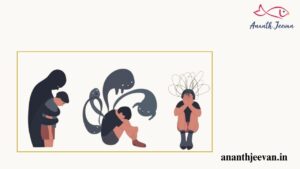
Schizophrenia is a severe mental disorder associated with impairments in social, personal, and occupational functioning. The disorder is characterized by extreme oddities in perception, thinking, action, sense of self, and manner of relating to others. All this indicates a significant loss of contact with reality. Loss of contact with reality is known as psychosis. There is a clinical difference between clients with schizophrenia.
The curial clinical feature of schizophrenia is delusions, hallucinations, disorganized speech, and disorganized behavior.
Symptoms of Schizophrenia
- Delusions are erroneous beliefs that are rigidly fixed and firmly held despite contradictory evidence. People with delusions believe in things that are bizarre.
- Hallucination is a sensory experience that seems very real to the person having it. Hallucination is different from illusion; illusion is the misperception of a stimulus that actually exits. Hallucinations can occur in any sensory way—auditory, visual, tactile, gustatory, or olfactory.
- Disorganized speech refers to the thought content and ideas that are being expressed. The person will fail to make sense out of their speech. The failure to make sense is not associated with their intelligence, poor communication, or deprivation. The disorganization is associated with cognitive slippage and the loosening of associations. When the listener listens to the disorganized speech, they will have little to no understanding. In some cases, they may come up with new words.
- Disorganized behavior occurs in their daily routine, occupation, social interactions, and self-care. The person has disregard for safety, personal hygiene, and odd behavior like wearing an overcoat, scarf, and gloves during the summer. Catatonia is one of the bizarre behaviors where the person may show a virtual absence of all movement and speech, which is called a catatonic stupor.
Subtype of Schizophrenia
Paranoid Schizophrenia: The person has absurd and illogical beliefs. Paranoid schizophrenia is characterized by unreasonable suspicion and positive symptoms. For example, they might complain that someone is planning to harm them or looking out to kill them.
Disorganized Schizophrenia: Disorganized schizophrenia, also known as hebephrenic schizophrenia, is characterized by disorganization in speech and behavior.
Catatonic Schizophrenia is a rare subtype of schizophrenia. It is less frequent among people with schizophrenia. It is characterized by being immobile, maintaining a rigid posture, and resisting all attempts to be moved.
Undifferentiated Schizophrenia: This category is for patients who don’t fit into the previous category.
Other Psychotic disorders are:
- Schizoaffective disorders
- Schizophreniform disorder
- Delusional disorder
Treatment
Medications
Medication is mandatory for treating schizophrenia. Antipsychotic medications are commonly prescribed drugs for schizophrenia. The drugs help the client effectively. The medications work on quieting the voices, diminishing delusional beliefs, and improving clinical improvement. A common problem with medication is side effects like drowsiness, dry mouth, weight gain, muscle spasms, and shaking.
Psychosocial Approaches
Psychosocial approaches incorporated with medication can help the patient learn and adapt to their environment.
Family therapy
The family intervention program aims to reduce relapse by changing aspects of the patient-patient relationship. Working with the patient and their families starts by educating them about schizophrenia to help them improve their coping and problem-solving skills. Enhance communication skills among families.
Social skill training
People with schizophrenia have problems with friendships, getting and keeping jobs, and living independently. Social skill training is given for them to function adequately in their lives. The social skills include employment skills, relationship management skills, self-care skills, and skills for managing symptoms.
Electroconvulsive Therapy
Electroconvulsive Therapy(ECT) is used when other treatments don’t work. The treatment involves using an electrical current applied to the scalp to stimulate certain parts of the brain. The stimulation can cause a brief seizure, which can help the individual. This treatment is also used for mood disorders. Anesthesia is given before the procedure so the person doesn’t feel any pain or discomfort.
Share
Here to help
If you need help, Ananth Jeevan is here.
Call our helpline (+91-9063-Jeevan)+91-9063533826 to talk to our counsellors
Download the AJ App (on Android and AppStore )
For Counselling appointments, use our WhatsApp number ![]()


